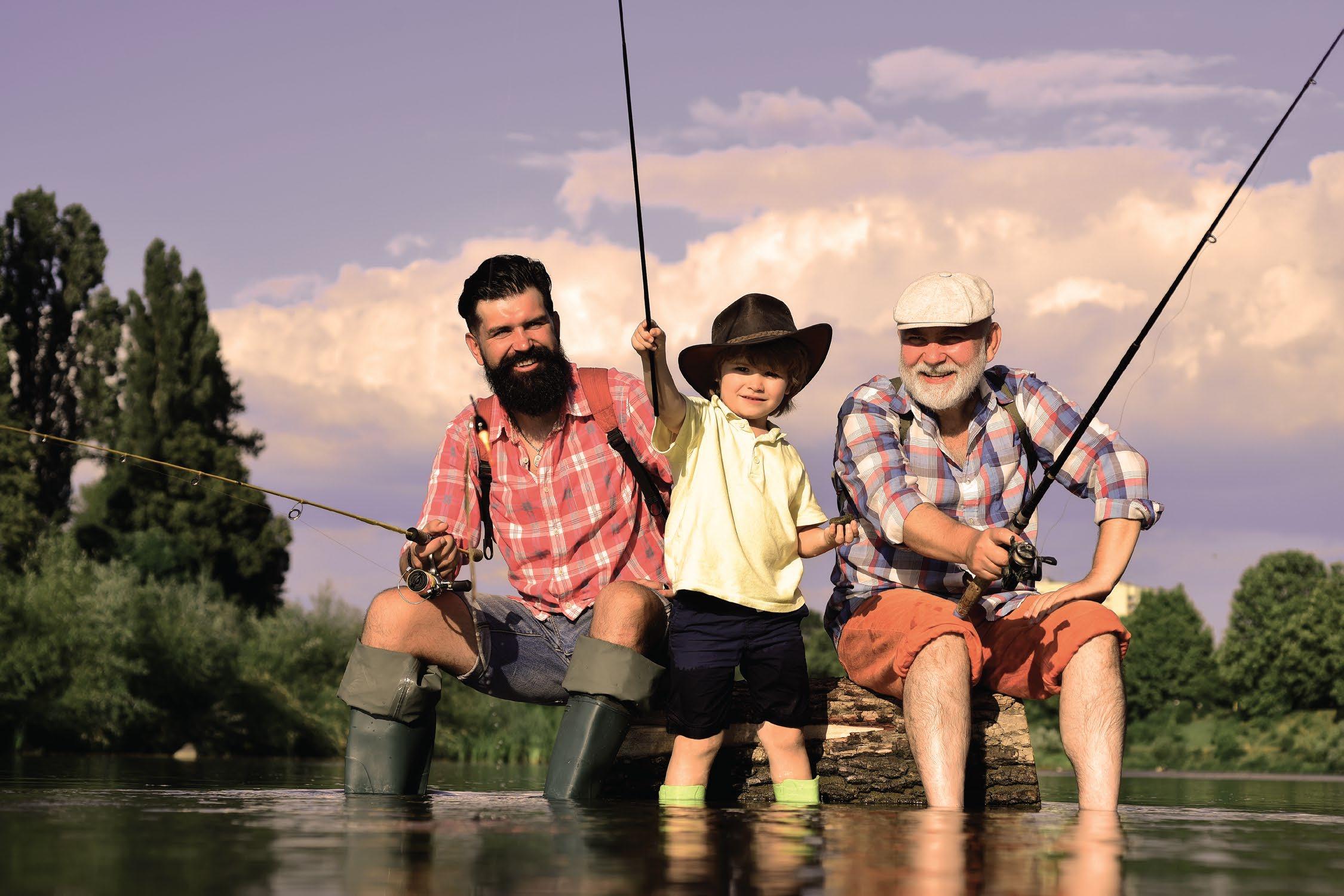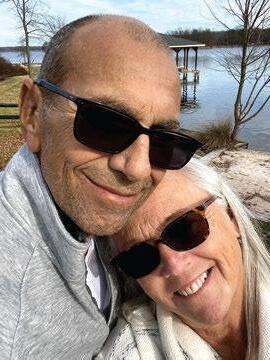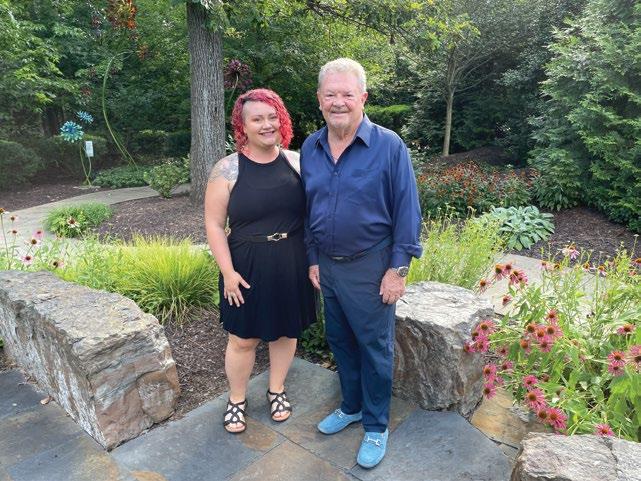






Dear Friends,
At Hospice of the Chesapeake, we believe caring for the whole patient includes caring for people walking beside them. Caregivers, such as spouses, adult children, partners, and friends, are the fragile backbone of serious illness care. Our traditional healthcare system assumes they will “figure it out.” But caregiving is emotionally and physically exhausting, especially in the face of a prolonged illness like dementia.
However, we are beginning to see a shift. The healthcare community is waking up to the reality that the patient and caregiver are an important partnership, often referred to as a “dyad.” If the caregiver is overwhelmed, the patient cannot thrive. Without caregiver support, hospitalization and nursing home placements increase. But with the right help, caregivers are better able to manage keeping the patient safely at home. And we know, so often, that is where our patients prefer to be.
That’s why Hospice of the Chesapeake has long offered caregiver services like support groups, a wide range of healing arts, and educational programs like Dementia Live, our dementia simulation experience that builds empathy and helps others understand the experience of living with dementia. And we are always investigating cutting-edge technologies and novel tools to further combat caregiver distress and isolation.
Now, we are embarking on our most comprehensive program ever, focusing on the important dementia patient and caregiver dyad experience. On July 1, we launched Guiding an Improved Dementia Experience, or GUIDE. This seven-year program connects patients and caregivers to care navigators, education, emotional support, and even some respite services. As we reach patients earlier in their dementia course, GUIDE allows us to support patients and caregivers attempting to age in place. It’s a natural extension of our mission, and it allows us to help families and, hopefully, avoid crisis care. To make this happen, we’ve identified new ways for our palliative providers, doulas, bereavement experts, healing arts professionals, and volunteers to collaborate.
The Center for Medicare & Medicaid Innovation is investing in this model, but not all costs are covered. Your generosity helps us fill the gap, so families don’t have to walk this difficult road alone.
Thank you for standing with us. With your support, we can honor caregivers and help patients live more fully—and safely—through every stage of illness.
Warmly, Dr. Marny Fetzer Chief Medical Officer Hospice of the Chesapeake

Dr. Marny Fetzer Chief Medical Officer
What is GUIDE? Guiding an Improved Dementia Experience (GUIDE) is a groundbreaking pilot program led by the Centers for Medicare & Medicaid Innovation (CMMI) that aims to support people with dementia and their unpaid caregivers at any stage of disease, including mild dementia. Our hospice is one of fewer than 400 healthcare organizations nationwide CMMI selected to participate.
What is the goal? The goal is to enable patients with dementia to remain safe in their homes, preventing or delaying nursing home placement and improving quality of life, as well as reducing strain on caregivers.
How does Hospice of the Chesapeake fit in? Our organization is building on decades of experience in hospice and palliative care case management to assist patients and their caregivers earlier in their dementia journey.
ON THE COVER: Gone Fishing! Hospice gives you the ability to create memories to cherish.
Throughout the year, hospice volunteer veterans deliver Honor Salutes to veterans in our care—nearly one in four patients. The ceremony includes a certificate of appreciation, a handmade quilt, a commemorative pin, and thank-you cards made by children. It concludes with a solemn salute and the veteran’s service song. Volunteers also host group Honor Salutes in partnership with nursing and assisted living communities.
Donors like you make it possible for veterans to receive Honor Salutes. To learn more about this special program,


Perhaps one way to picture Hospice of the Chesapeake is as an organization woven into the fabric of care across our region. Within the past few years, Hospice of the Chesapeake has expanded collaborations with hospitals, universities, and community organizations. Why? Because every patient deserves seamless, compassionate care, wherever they are on their journey.
“In the not-for-profit hospice space, innovation leads to sustainability,” says Chief Operating Officer Brian Berger, LCSW-C, APHSW-C. “We connect with other like-minded organizations to deepen our roots and expand care to communities we serve.”
Our nurses and staff liaisons work at University of Maryland Baltimore Washington Medical Center, University of Maryland Charles Regional Medical Center, University of Maryland Capital Region Medical Center, and Calvert Health. In addition to liaisons, our managers of community partnerships collaborate closely with hospitals from Baltimore to Washington, D.C., to coordinate the care of patients returning home. These relationships help ensure timely referrals and smooth transitions for patients who need palliative or hospice care.
“We’re there at the moment when families start asking tough questions,” says Colleen Shields, director of community partnerships. “Our team guides the process—from verifying insurance and coordinating care to arranging equipment, often within hours.”
Collaboration includes training the next generation of clinicians. Medical residents at the University of Maryland Capital Region Medical Center now complete a palliative care rotation with us, gaining firsthand experience in caring for serious illness and how goals of care evolve at the end of life.
Within the community, hospice team members are stepping forward. For example, in April, Chaplain Wayne Bumbry received the “Unsung Hero” award from the 100 Black Men of Prince George’s County chapter. The group focuses on mentorship of AfricanAmerican youth for success in education, health, wellness, and economic empowerment. Collaborating with this group, as well as with other local programs, paves the way for deeper conversations with people and organizations across the region.
Community outreach also taps into creativity. For example, healing arts workshops help clients at Light House Homeless Prevention Center. Here, we provide grief support for underserved communities, ensuring vulnerable community members receive the care they deserve.
From large healthcare systems to smaller community groups, collaborations happen because of you. Your generosity helps us innovate, partner, and care broadly and deeply —building on our founding values defined more than 45 years ago.
Your generosity made this possible

If you’re reading this, chances are hospice care touched your life. You remember the kindness, the quiet presence, the people who stood by you when it mattered most.
Bereavement counselor Christa Martin never expected “gamemaster” to be part

13-year-olds on a journey of epic quests and magical characters.
It’s called Adventures Through Grief—a tabletop fantasy role-playing support group designed just for teens. Around the table, young people don’t just talk about their feelings. They embody them. One becomes a half-elf ranger. Another, a sorcerer. Another, a barbarian. Together, they cross the “Bridge of Letting Go,” each step in the fantasy world helping them take one step forward in real life.
Grief is hard. Grief as a teen? Even harder. "Avoidance is common,” Christa explains. “But here, they show up. They’re invested. They laugh. They build trust. And in the safety of imagination, they start to open up." As their characters face challenges, so do the teens, navigating loss, trust, and healing in ways traditional talk therapy might not allow.
One teen quietly scattered ashes in the game—echoing something unspeakably painful from real life. Another composed a piece of music to honor a beloved character. “They move through their grief,” says Christa, “while learning how to show empathy and hold space for each other.”
Adventures Through Grief was created in partnership with Blue Ridge Hospice in Westchester, Va., and is part of a national research study exploring storytelling and fantasy roleplay as tools for healing. It’s creative, it’s effective—and it’s only possible because of donors like you.
Thank you for believing in the power of connection—even when it wears a wizard’s hat.
Wherever your loved one had care, those days and nights are hard to forget.
Here’s something you may not know: We remember you, too.
Our team carries your stories in their hearts—moments of grace, courage, and connection they’ll never forget.
Scan the QR code to hear memories that still inspire us.
Your generosity helps people find strength after heartbreak.
Please help today at 443-837-3385 or hospicechesapeake.org/giving
What does your generosity mean to someone who has lost a spouse, a parent, or a child? More than you might imagine.
“Grief is isolating and seemingly endless. Someone may have cried it out with family and friends and not know what’s next,” says Bereavement Counselor Jenn Ward, LMSW. Support groups offer that help. “A support group becomes your grief tribe. You talk with others who understand and will not judge.”
Thanks to donors like you, Hospice of the Chesapeake provides grief support at no cost for 13 months to every adult and child whose loved one was in our care. And because grief doesn't follow a schedule, we also offer these services—on a generous sliding scale—beyond that first year and to anyone in our community who has experienced loss, even if their loved one wasn’t in hospice.
Contact Chesapeake Life Center
888-501-7077
griefinfo@chesapeakelifecenter.org



For Carole Brady, grief didn’t arrive all at once. When her husband Jim passed away in 2022, she was surrounded by the love—and busy schedules—of her five children and 13 grandchildren. Life moved forward, and so did she. Until it didn’t.
“It was Year Two when reality slapped me in the face,” Carole says. “There were days of ugly crying. I felt broken.” Jim battled liver disease, diabetes, and early-stage dementia. Carol was his caregiver. The silence after his passing was deafening.
But Jim wasn’t the only one she grieved. Earlier, Carole said goodbye to both parents, and her grandmother, whom she had cared for. Adding to her losses? Her brother died by suicide just a few years prior.

Seeking help when overwhelming grief hit hard, Carole reached out to Chesapeake Life Center. She turned to counseling and a support group.
“There’s comfort in knowing you’re not alone. Everyone grieves differently, but sharing stories helps,” she says. The camaraderie helped her heal, as she learned from others. Those lessons took on greater meaning when her cherished father-in-law and brother-in-law passed away. “It felt like Jim died all over again.” And again, counseling and the support group pulled her through.
Today, Carole keeps her promise to honor Jim by living well. She, her mother-in-law, and sister-in-law call themselves the “Brady Merry Widows,” enjoying time together and holding each other up through the rough spots. Her large family gathers for family vacations, beach days, and birthdays. A favorite family tradition? Every grandchild writes “Pop” on their new sneakers.
“There’s still pain,” she says, “but there’s also joy. And every morning brings a new beginning.”
Hear more of Carole’s story and from others who found hope after loss in this video about our grief support programs, produced by the Hospice Foundation of America.
One week before Christmas, Jerry’s family made a heartbreaking decision. He had end-stage kidney disease. Dialysis had sustained him for months, but his body was failing. Together, they chose hospice—wanting his final days filled with comfort, not pain and interventions.
Jerry had just one wish: one last holiday with his wife, his three children, and two toddler grandchildren. Because of donors like you, our hospice team could honor that wish. With coordination and care, Jerry received two more dialysis treatments, something neither covered nor expected within the traditional hospice plan.
“Hospice is healthcare,” says Dr. Sonja Richmond, Vice President of Medical Affairs. “It’s not about stopping care—it’s about providing the right care at the right time. Evidence-based medical interventions promote comfort and reflect what patients and families desire.”
Covered through donor support, dialysis—once unusual in the hospice setting—represents an expanded view of care. Jerry had strength to gather with family, savor a final Christmas, and say goodbye. He passed peacefully just before the new year.
Another patient, diagnosed with metastatic lung cancer, spent 30 days in the hospital on high-flow oxygen. With the help of his hospital team, Hospice of the Chesapeake clinicians transitioned him to our Charles County Inpatient Care Center, where he was weaned off oxygen therapy. That freedom meant he could return home for his final weeks, surrounded by family and his beloved dog, Skipper.
These stories are not the exception. They are the standard of care made possible through your support.
Our hospice teams offer advanced symptom management, expanded therapies for cardiac and lung disease, and support for patients with dementia. Further, the freestanding inpatient centers in Pasadena and Waldorf also include high-flow oxygen to help patients with advanced lung disease—an option no other local hospice offers.
Dr. Richmond adds that referral partners in the community—hospitals, skilled nursing facilities, and physicians—appreciate these advanced therapies and commitment to patient and family care. “They know we do everything we can to provide the best for every patient.”
That donor-supported work includes an umbrella of community health services for patients, families, and anyone facing loss in our four-county region: integrative arts sessions, grief support including grief camp, veterans’ programs, even restful gardens for remembrance and reflection.
“We invite family and friends to lean in and care for their loved ones in their best way—as a spouse, a child, a sibling, a friend—and let hospice team members carry the clinical and psychosocial care,” she says.
Hospice is about more than the last days, she says. “It is about being present, empowering people we care for, and providing patient- and family-centered care to make the most of every moment.” And because of your generosity, hospice is right here to do what’s best for every patient and every loved one.

Advanced Cardiac Care. Education to help patients and caregivers manage their condition, reducing the likelihood of hospital visits and improving their quality of life.
Advanced Lung Care. Specialized care for patients experiencing severe symptoms from chronic lung disease.
Dementia Care. Extensive emotional, educational, and practical support for patients and caregivers as the disease progress.
High-Flow Oxygen. Advanced therapy to help patients breathe comfortably—without hospitalization.
The crowd buzzed after Fashion for a Cause in May. The fashion, the food, the extraordinary generosity all added up to more than $305,000 raised for pediatric hospice care, children’s grief counseling, and family support services.
Perhaps one of the most powerful moments happened after the show. Ken Stanley stood quietly near the edge of the room, holding the weight of the evening in his heart. His son, Michael, died in 2018 after a long struggle with mental illness. A gifted poet and songwriter, Michael’s words now greet visitors to the Michael Stanley Children’s Garden on our Pasadena campus—a space created for remembrance and healing.
That night would have been Michael’s 36th birthday.
As Ken remembered his son, a mutual friend introduced him to Marie Burgess.
They had never met. But Marie already knew Michael.
She had walked the garden’s paths. She had paused to read his poem. She had felt his spirit, time and again, while guiding other grieving families through heartbreak.
Marie’s son, Harvey, died at just four years old. During his short life, he endured countless hospital stays and a mountain of diagnoses.
When the Burgess family turned to Hospice of the Chesapeake, they were finally able to stop managing his care—and start embracing the time they had left together.
“Hospice gave us space to be Harvey’s parents, not just his caregivers,” Marie says.
After Harvey’s death, Marie found healing in a parent grief support group at Chesapeake Life Center. Today, she helps others walk the same path—leading groups, volunteering at Camp Nabi, and offering grief counseling.
When she told Ken, “I know who Michael is,” his eyes filled with tears.

Ken once said that naming the garden for Michael was the greatest thing he could have done. “At my son’s funeral, I promised him he would never be forgotten,” he shared. “The garden keeps that promise.”
Though separated by years, circumstance, and the shape of their loss, Ken and Marie shared something unspoken but deeply understood: a bond only those who have lost a child can know.
This is the heart of what your support makes possible.
At Hospice of the Chesapeake, your gifts help people through the hardest seasons of their lives. You ensure counseling, support groups, children’s grief camps, and sacred spaces like the Michael Stanley Children’s Garden—where grief is honored and healing begins.
Because no one should have to grieve alone. Thank you for making this work possible.

About the Garden: Wildflowers and native plants, along with whimsical sculptures and the new Phone of the Wind, grace the Michael Stanley Children’s Garden in Pasadena. Filled with walkways and benches for quiet reflection, the garden welcomes visitors of all ages all year long.
Scan to hear more stories about caring for children.
Your generosity ensures counseling, support groups, and art workshops, including programs in Spanish, to help others find their good days after heartbreak. Did you know 64% of clients seeking grief support did not have a loved one in hospice and came to us through schools, community programs, and faith-based centers? And healing integrative arts programs are only possible because of donors like you? Thank you! THANK YOU FOR THE GOOD DAY
Scan above to give today.

Hello, Anne Arundel, Calvert, Charles, and Prince George’s Counties!
From bingo, fashion shows, and golf to fun runs, wine tastings, and more, there are lots of eventful ways across our region to support Hospice of the Chesapeake. Bookmark our events page: hospicechesapeake.org/giving/attend-an-event/ Follow us on socials. See you there!